Ultimate Guide to Dropshipping Returns and Refunds
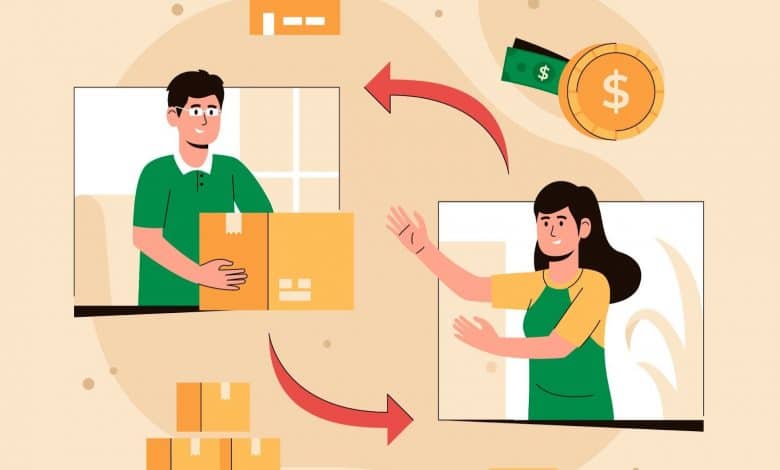
In any B2C business, requests for refunds or returns on a purchase are inevitable. As an entrepreneur in a dropshipping business, this can be one of your biggest problems. You have no control over how the product is produced, and in the event a customer wants a product returned, you have no place to store inventory.
Despite all you’ve heard from gurus or e-commerce experts saying dropshipping is dead for Amazon and Shopify, it’s still a booming business that requires $0 to get started.
We even had a podcast episode in 2018 about whether dropshipping is dead, yet here we are, five years later, sharing tips for handling dropshipping returns and refunds.
In this article, we’ll discuss dropshipping in-depth, what causes products to be returned in the first place, and how to handle the situation effectively.
How Do Returns and Refunds in Dropshipping Work?
The good news is that the general process of product returns and refunds is more or less identical across different platforms.
It starts with the customer contacting the seller (dropshipper) about returning a product. Sellers issue a return. Platforms like Amazon or eBay will check if the request falls within their policy.
If you’re selling on Amazon as a dropshipper, at this point Amazon handles product returns automatically by sending return labels to the customer and then charging your account for shipping fees. On other platforms, once the request is approved, it will be your responsibility to facilitate the return.
This includes picking up the product from the customer’s preferred location, paying for shipping fees (this depends on your agreement with your supplier), then facilitating the return shipping to have the product sent back to your customer (if they issue a replacement instead of a refund).
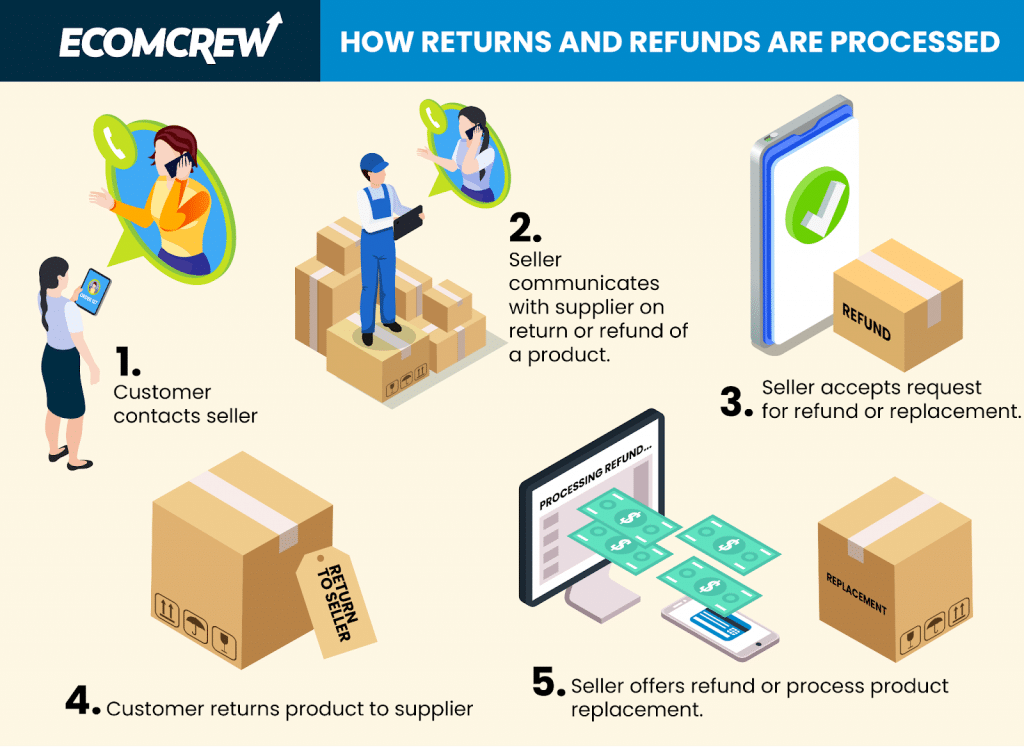
In certain situations, you will have to pay the cost of shipping to have the product sent back to your supplier. Then, you have to pay a separate shipping fee to have the replacement shipped back to your customer. The worst part is that some suppliers will even charge you a restocking fee when a product is returned.
In other cases, dropshippers will simply choose to let the customer have the product for free and still offer a replacement, especially if it’s an item that doesn’t cost much, to begin with. It’s a cheaper alternative since you save on shipping and restocking fees. Either way, your business still suffers loss during these transactions.
Common Reasons for Dropshipping Returns and Refunds
It’s always an unpleasant feeling for sellers to see customers request a refund or return a product. You worry about getting negative reviews, losing credibility on your store, and having platforms like Amazon rank your products lower in searches.
There are plenty of reasons why customers would request a refund. Knowing them can help you foolproof your products to ensure you instill a positive shopping experience in your customers.
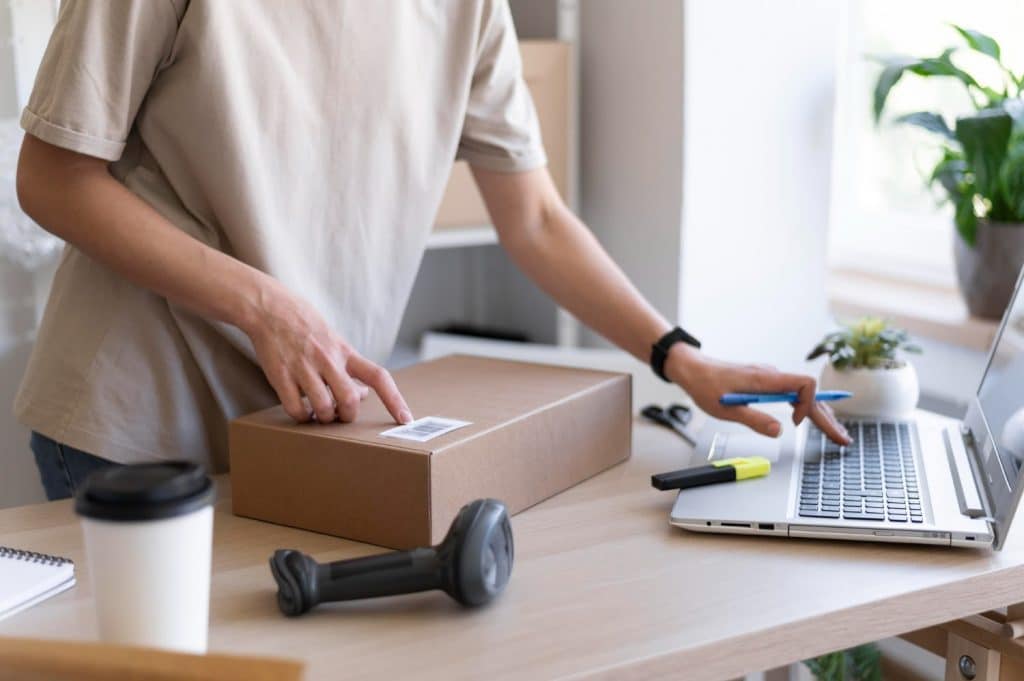
#1Product does not satisfy a customer’s expectations
This usually happens when the images you post on your listing don’t reflect the actual product itself. For example, if you’re selling socks, your product listing should have pictures of the different colors available or even add a video so your customers know what kind of shade they’re getting.
You can also request the supplier to send you the actual photos of the products that you can then send to the buyer before shipping.
#2Product is defective or damaged
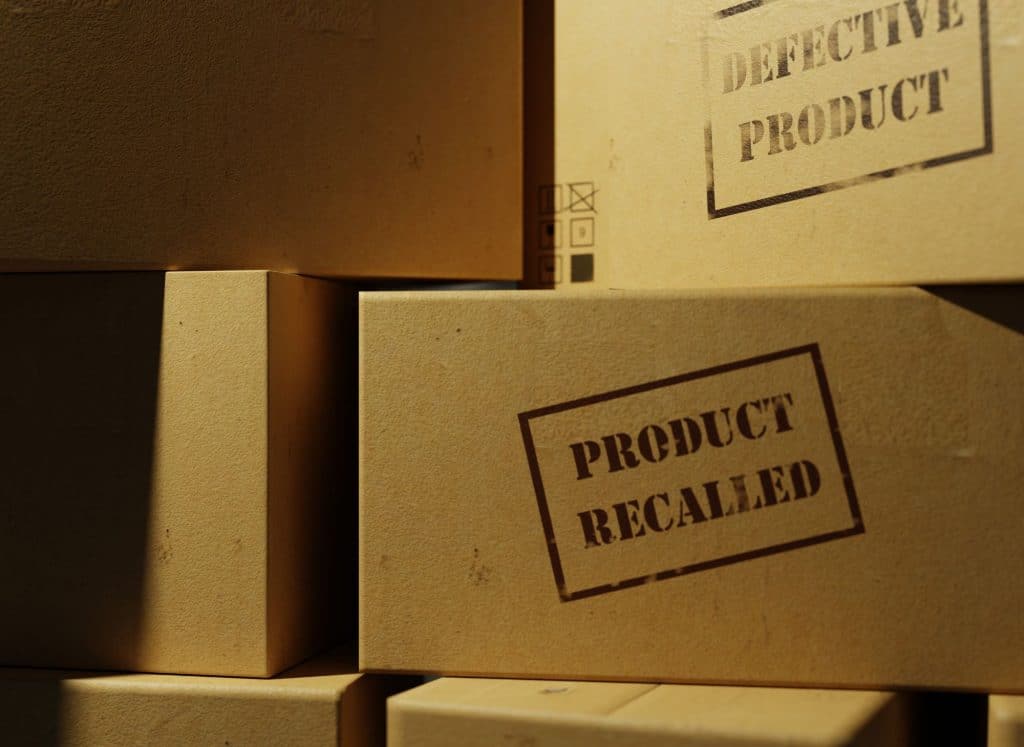
Although this is completely beyond your control, it happens frequently even if you have a reliable supplier. Whether it happens because your supplier sent a faulty product or it got damaged on its way to a customer, the best thing you can do is to offer returns or refunds for a faulty product to maintain a good relationship with your customer.
Since product returns are common in the e-commerce industry, make sure to iron out your return policy before opening your shop. It’s best that your return policy be similar to that of your supplier since some won’t accept returns, some will charge a return stocking fee, and there are a few others that accept free returns.
#3Ordered product came in the wrong size
This is a common occurrence for products related to clothing or jewelry. Due to the nature of online shopping, customers are left to refer to the size guide on your listing.
If the item comes in the wrong size and the customer asks for a return or refund, the first thing you need to do is check your supplier’s return policy.
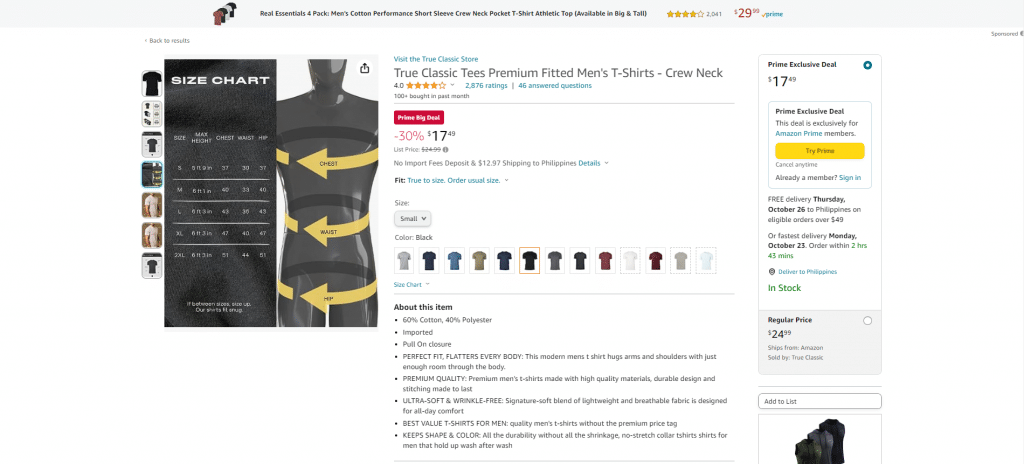
Some will offer a free return, but if they don’t, check the shipping costs to have the products shipped back to your supplier. If the cost is greater than the money you’d earn from the product, it would be better to give the item for free and only pay for the product’s replacement.
#4Product arrived late or got lost during the shipping process
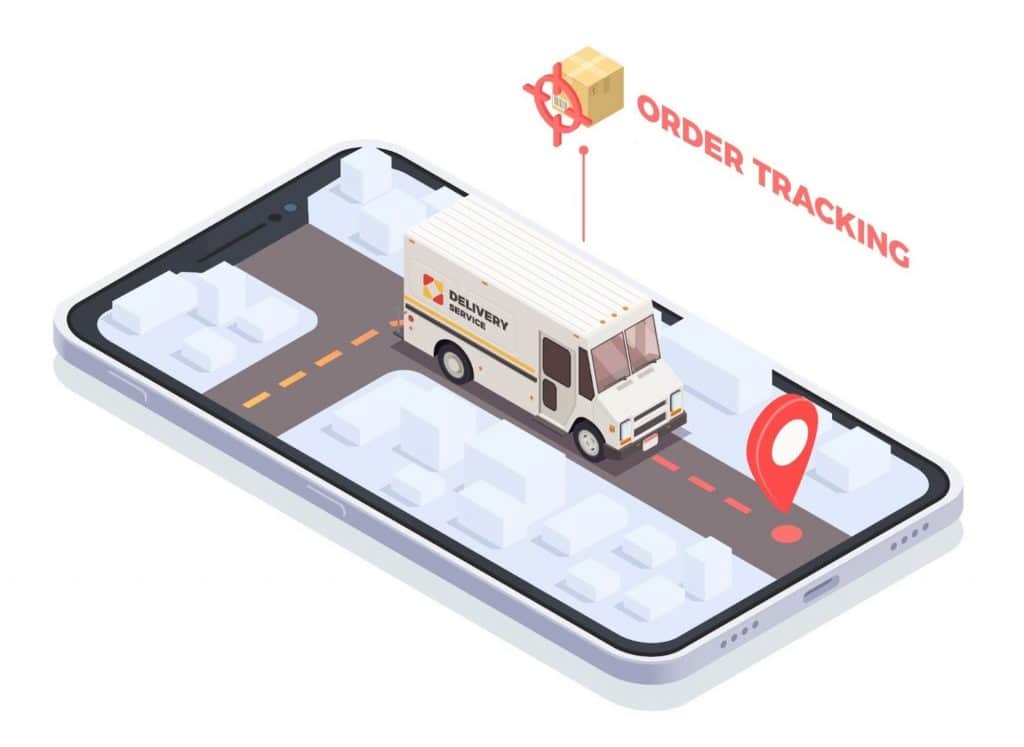
While this error may be another cause that’s beyond your control, couriers mishandling products is common due to the number of orders shipped each day, making it more susceptible to human error.
The best way to handle a late or lost package is to be one step ahead and purchase shipping insurance.
How Dropshipping Returns and Refunds Should Be Handled
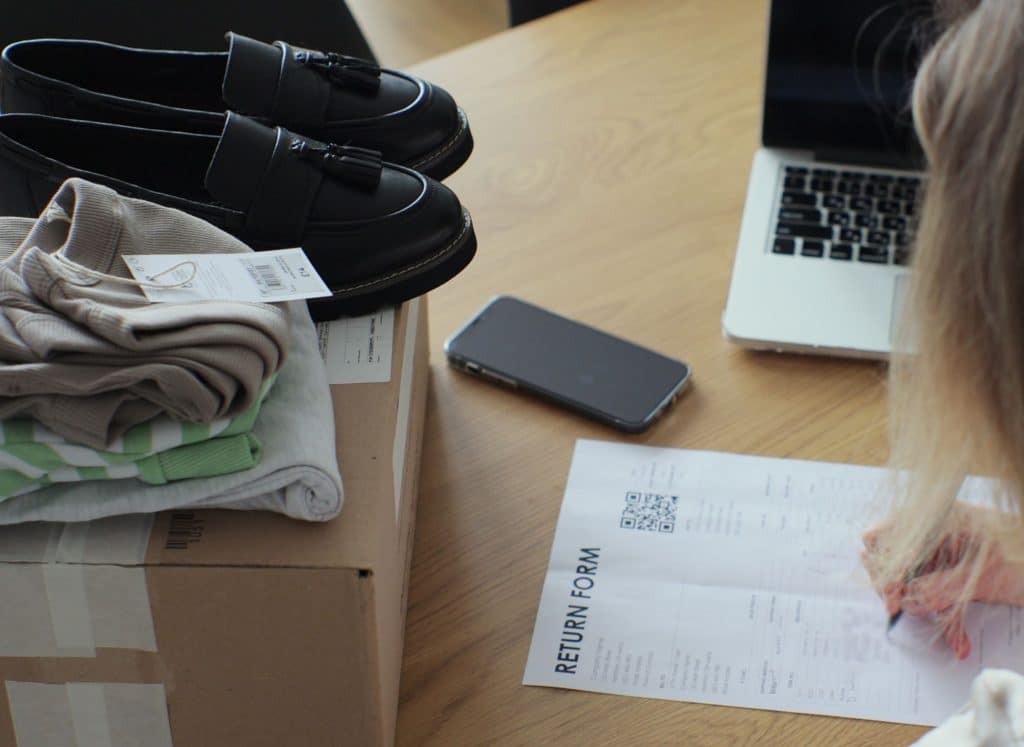
How you handle refunds and returns can make you stand out from your competitors. Although the product didn’t meet your customer’s expectations, there’s still a way you can turn them into a loyal customer.
Here are a few ways you can do it.
#1Define your return and refund policy
Did you know at least 49% of consumers will check a product’s return policy before purchasing a product? Having a clear, easy-to-understand return and refund policy will help your customers know what to expect from you before a return or refund has been processed.
The policy should include what products are eligible for return, the accepted time frame for products to be returned, and how the process usually goes once a request has been submitted.
By doing this, it lets you have more control over a return or refund of a product since there’s a legal document behind it.
#2Make it up to the customer
When customers are willing to wait for their orders to be replaced, you can take this as a hint that they prefer your brand over your competitors. This is a perfect opportunity for you to obtain a loyal customer.
Show them that you care about them too. Aside from replacing the product or giving a refund, send an extra product or coupon code for their next order. It doesn’t have to be a $100 gift card or a 50% discount, but a small token of appreciation can make all the difference for a customer.
#3Respond to queries quickly
When a customer receives a product and issues a return or refund, be sure to respond immediately. Show that you’re there for your customers and offer a solution to their problems. The last thing any customer wants is to feel like they’ve been scammed by a seller who fails to reply once an order has been completed.
How Can You Prevent Dropshipping Returns and Refunds From Happening to Your Business?
It’s near impossible for a seller to completely avoid getting returns or refunds on a product, but there are ways you can minimize them.
#1Optimize your product listing
This is one of the easiest and most common ways dropshippers list their products.
In your product listing, make sure that you use actual images of your product rather than stock images sent by your supplier. For products that have sizes such as clothing and jewelry, use a detailed size guide for your customer to use while ordering.
If these suggestions still lead to returns, consider adding a disclaimer stating a possible discrepancy from the listing to the real product to set a customer’s expectation.
You could also shore up your return policy as discussed below.
#2Have a return policy that’s identical to your supplier
It is important to first read your supplier’s policy before drafting your own. Some suppliers may or may not charge return stocking fees and offer free return shipping. Meanwhile, some may not even accept returns at all.
Drafting a return policy that is similar to your supplier can help you cut costs and avoid losing loyal customers.
#3Purchase Products From Your Supplier to Test the Quality of the Product
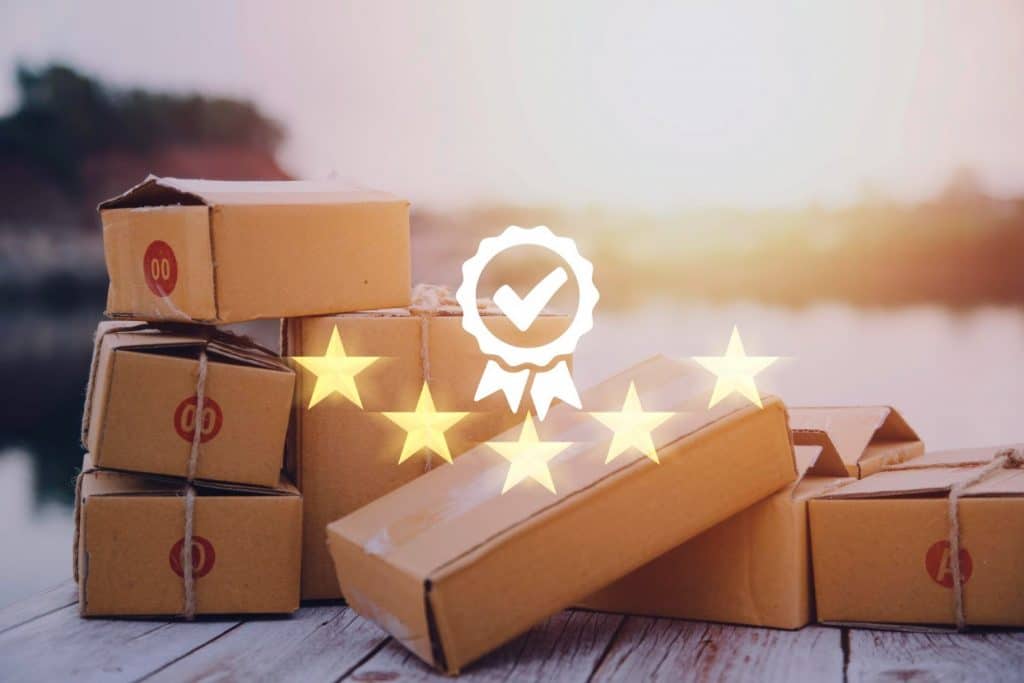
Having a physical sample of your product can help your business in many ways. With a sample in your hands, you can describe the product more clearly to your customers.
Testing the product before adding it to your ecommerce store will give you peace of mind and safeguard the reputation of your ecommerce store.
If you don’t want to go through the hassle of purchasing multiple products to simply test its quality, you can also hire third-party quality assurance companies like QIMA.
#4Ask your customers for feedback
Since you have no control over the product that was sent, asking your customers about their experience with the product can help you know more about your supplier and your customer base.
By asking your customers what you can do to further improve your products, it can increase customer retention and attract new customers as well.
When you try and get feedback or reviews for your products, it adds a personal element to your listing. The more reviews your product will get, the more credible your store is in the eyes of customers and platforms like Amazon and eBay.
Related Reading: The Ultimate Guide for How to Get Amazon Seller Feedback
Final Thoughts
Dropshipping is still a business that can bear fruit as long as you play by the rules.
Now that you have a better understanding of how to solve a dropshipper’s biggest worry, you can save time knowing what causes these returns in the first place and how to prevent them from happening moving forward.
Is it your first time handling a dropshipping return or are you still thinking about starting your own dropshipping business?
Whatever the case, we’ve also prepared a list of the top 10 best dropshipping websites for your e-commerce business.



